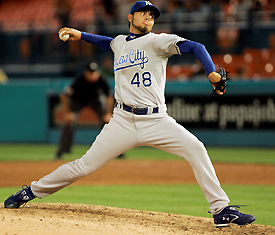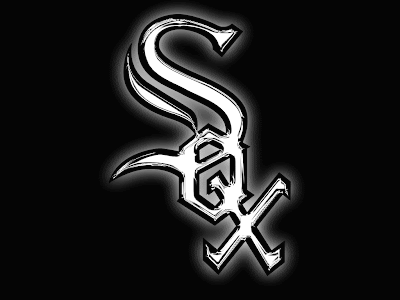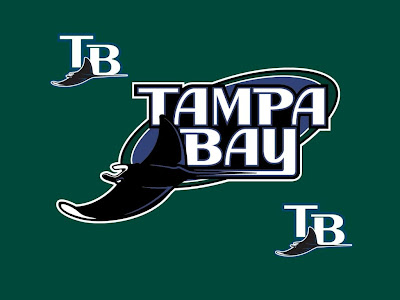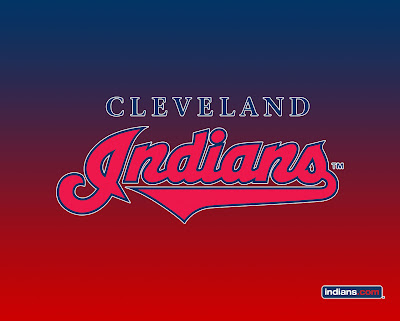
As new Blue Jays GM Alex
Anthopoulos begins his first
offseason with the Blue Jays as GM, there are plenty of questions surfacing about the direction of the team.
-What will the Blue Jays do with Roy
Halladay?
-Are the Blue Jays going to rebuild?
-Can the Blue Jays compete in the AL East in 2010?
The Blue Jays struggles competing in the AL East with the Yankees and Red
Sox in the
Ricciardi era have been well documented. While the Red
Sox and Yankees spend well north of $100 million dollars on player salaries, the Blue Jays have remained in the middle of the pack, only exceeding $90 million ($97 million, 2008) once.
As a result, the Blue Jays over the past eight years under
Ricciardi have been stagnant. The Blue Jays finished in second place in the AL East once under
Ricciardi, never made the playoffs, and could never put together a team deep enough to seriously compete in the AL East. The Blue Jays have taken a number of different approaches over the past eight years:
1. Sign big free agents
-Ricciardi signed Frank Thomas, BJ Ryan, and AJ Burnett to big (and controversial) contracts during his tenure2. Build through the farm
-
Players like Roy Halladay, Shawn Marcum, Dustin McGowan, Ricky Romero, Vernon Wells, Alex Rios, Adam Lind, and Aaron Hill all came up through the Blue Jays' farm system. That's an impressive list of talent, but that talent has yet to translate over to wins.For the Blue Jays to sustain long term success in the ultra competitive AL East, which approach should
Anthopoulous take?
Well, that decision is obvious to me: build through the farm. And the answer is not simply because the Blue Jays cannot compete with the payrolls of the Red
Sox and Yankees.
The answer lies with the Blue Jays center fielder: Vernon Wells. The Blue Jays owe Wells a ridiculous $98.5 million over the next five years, which is devastating to the Blue Jays because Wells has gone from a franchise cornerstone to below average outfielder in just a few seasons. For whatever reason, Wells has been declining rapidly.
Can the Blue Jays realistically compete if they have a struggling player taking up 10-22% of their total payroll (assume Blue Jays total payroll is roughly $80 million)? Hard to say. But hope is not lost for
Anthopoulous: just look at Colorado.
In 2001, the Rockies signed "cornerstone" first baseman Todd
Helton to a huge 9 year/$141 million dollar extension that handcuffed the Rockies payroll flexibility for years. By 2006,
Helton's contract took up a ridiculous 39% of the Rockies total payroll.
But even with
Helton's massive contract and the Rockies small payroll,
O'Dowd was able to accumulate great young talent through the draft and smart trades. Players like
Ubaldo Jimenez, Brad
Hawpe, Troy
Tulowitzki, Garrett Atkins, Aaron Cook, Brian Fuentes, Matt
Holliday, Dexter Fowler, Carlos Gonzalez and
Hutson Street are all examples of talented, cheap, young players, who either developed in the Rockies system or were acquired via trade. As a result of his efforts,
O'Dowd's Rockies have made the playoffs in 2 of the last 3 years.
Realistically, can
Anthopoulos follow the
O'Dowd model to success? It will be very difficult. Competing economically with the Red
Sox and Yankees is completely different than competing with the Dodgers and Giants. But honestly, this is the only way the Blue Jays can realistically look to compete with the Red
Sox and Yankees in the future.
And in all fairness, the Blue Jays will need Vernon Wells to become a productive player once again. Even though Todd
Helton has been declining since 2005, he's still productive hitter and far from a liability at the dish. The turnaround of the Blue Jays will directly coincide with the redemption of Vernon Wells.
With that in mind, I'd trade Roy
Halladay this
offseason, accumulate as much young talent as possible, and begin a short term rebuilding process with the goal being to compete in the AL East by 2012. Eliminate short term mediocrity in the name of long term success.
Thoughts?
****** ******
(Jorge Says No! on Facebook)
(
Follow Jorge Says No! on Twitter)





























 This creature, the Thunderbird, is massive, dark brown in color, enormous beak, sharp claws, and a wing span of nearly 30 feet. The journey begins north to the frigid weather of Anchorage, Alaska. While waiting for their connecting flight, some locals were telling their stories of the Thunderbird. They tell them that the temperature has been 20 degrees to below 35 at night. They then boarded their flight from Anchorage to Dillingham, an isolated town that can not be reached by road. It was whiteout conditions when they arrived there. Josh talk to a local pilot, who told them that what he saw was no ordinary bird, it was much different. In order for them to get a sweep of the area, they took an airplane up to check it out. They chartered a 1961 classic plane, and scouted out the area where they spotted the tiny town of Manokotak. This was the town where most of the sightings have been reported. Back on the ground in Dillingham, they geared up for the long trek to Manokotak. Josh wants to look for eyewitness to help them target the best investigation sight. Using a fleet of snowmobiles and local guides, they head off in the below freezing weather to Manokotak, a.k.a. Thunderbird country. On the way, Bicha flips his snowmobile but is ok. The yuk’ip natives fed the crew some local cuisine, and moose fat. Then they hooked up with Timmy Evon, an Alaskan pilot who spotted the Thunderbird very close to where they were. He directed them to the exact location where he saw the creature. They found the area and set up base camp.
This creature, the Thunderbird, is massive, dark brown in color, enormous beak, sharp claws, and a wing span of nearly 30 feet. The journey begins north to the frigid weather of Anchorage, Alaska. While waiting for their connecting flight, some locals were telling their stories of the Thunderbird. They tell them that the temperature has been 20 degrees to below 35 at night. They then boarded their flight from Anchorage to Dillingham, an isolated town that can not be reached by road. It was whiteout conditions when they arrived there. Josh talk to a local pilot, who told them that what he saw was no ordinary bird, it was much different. In order for them to get a sweep of the area, they took an airplane up to check it out. They chartered a 1961 classic plane, and scouted out the area where they spotted the tiny town of Manokotak. This was the town where most of the sightings have been reported. Back on the ground in Dillingham, they geared up for the long trek to Manokotak. Josh wants to look for eyewitness to help them target the best investigation sight. Using a fleet of snowmobiles and local guides, they head off in the below freezing weather to Manokotak, a.k.a. Thunderbird country. On the way, Bicha flips his snowmobile but is ok. The yuk’ip natives fed the crew some local cuisine, and moose fat. Then they hooked up with Timmy Evon, an Alaskan pilot who spotted the Thunderbird very close to where they were. He directed them to the exact location where he saw the creature. They found the area and set up base camp.
























